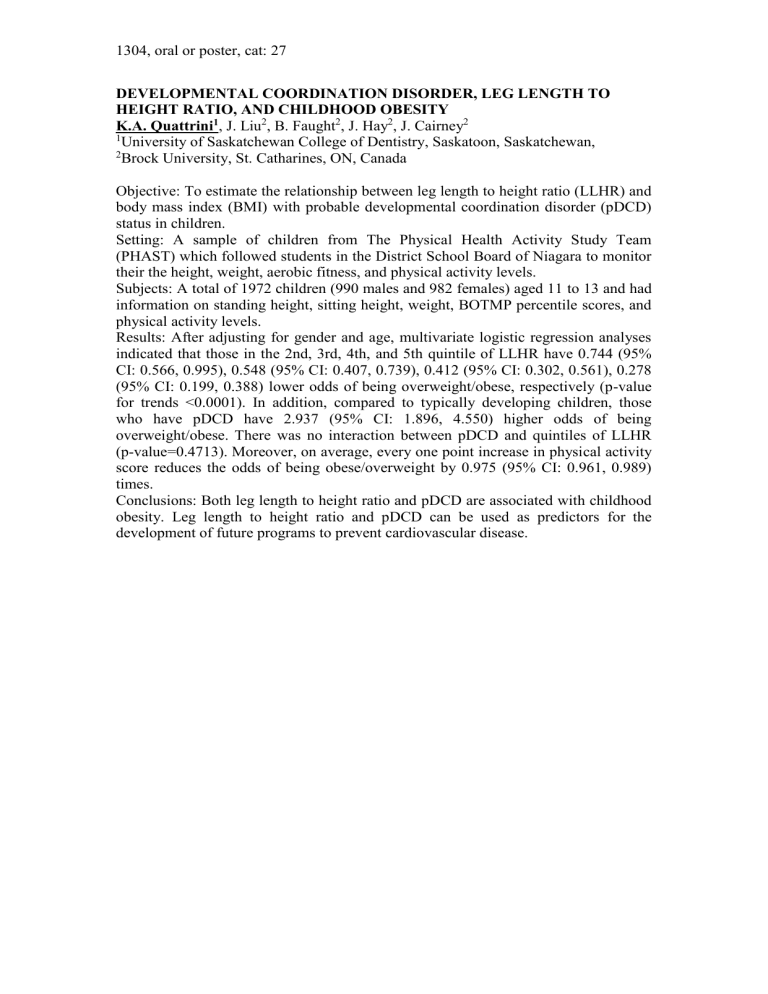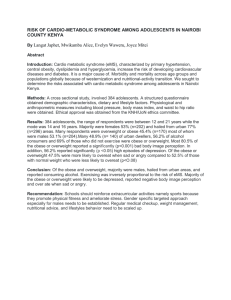developmental coordination disorder, leg length to height ratio, and

1304, oral or poster, cat: 27
DEVELOPMENTAL COORDINATION DISORDER, LEG LENGTH TO
HEIGHT RATIO, AND CHILDHOOD OBESITY
K.A. Quattrini 1 , J. Liu 2 , B. Faught 2 , J. Hay 2 , J. Cairney 2
1
University of Saskatchewan College of Dentistry, Saskatoon, Saskatchewan,
2
Brock University, St. Catharines, ON, Canada
Objective: To estimate the relationship between leg length to height ratio (LLHR) and body mass index (BMI) with probable developmental coordination disorder (pDCD) status in children.
Setting: A sample of children from The Physical Health Activity Study Team
(PHAST) which followed students in the District School Board of Niagara to monitor their the height, weight, aerobic fitness, and physical activity levels.
Subjects: A total of 1972 children (990 males and 982 females) aged 11 to 13 and had information on standing height, sitting height, weight, BOTMP percentile scores, and physical activity levels.
Results: After adjusting for gender and age, multivariate logistic regression analyses indicated that those in the 2nd, 3rd, 4th, and 5th quintile of LLHR have 0.744 (95%
CI: 0.566, 0.995), 0.548 (95% CI: 0.407, 0.739), 0.412 (95% CI: 0.302, 0.561), 0.278
(95% CI: 0.199, 0.388) lower odds of being overweight/obese, respectively (p-value for trends <0.0001). In addition, compared to typically developing children, those who have pDCD have 2.937 (95% CI: 1.896, 4.550) higher odds of being overweight/obese. There was no interaction between pDCD and quintiles of LLHR
(p-value=0.4713). Moreover, on average, every one point increase in physical activity score reduces the odds of being obese/overweight by 0.975 (95% CI: 0.961, 0.989) times.
Conclusions: Both leg length to height ratio and pDCD are associated with childhood obesity. Leg length to height ratio and pDCD can be used as predictors for the development of future programs to prevent cardiovascular disease.











